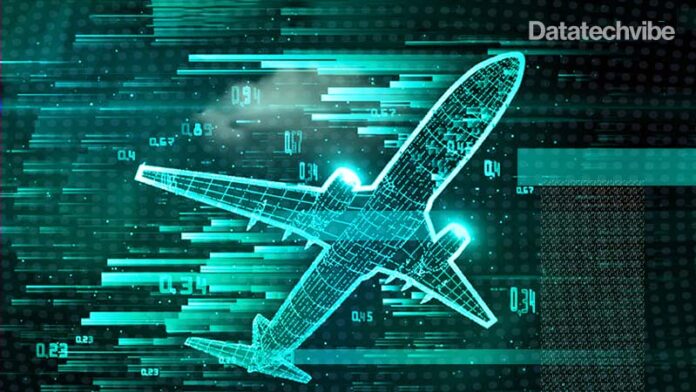Investing in a higher-end analytics system can have a significant impact on both profitability and the environment, not to mention saving customers from dynamic pricing.
Jet fuel prices have reached an all-time high, with a 50 per cent increase in prices compared to last year. On the other hand, with rising crude oil prices, the demand worldwide for air travel is now pushing up total fuel consumption. With such persisting trends, airlines are now pondering upon their future due to increasing operating costs. Many carriers are yet to inculcate emerging technologies to optimise aircraft performance and reduce fuel consumption. Given that fuel constitutes between 25 and 30 per cent of the industry’s core expenses, a cut of a couple of percentage points could save airlines worldwide billions, even if fuel prices stabilise. It can also help airlines live up to international targets for greenhouse-gas emissions and consumer-friendly travel costs.
A potentially powerful strategy might be to convert today’s static flight planning into a more dynamic model, allowing airlines to save by making a few adjustments. Minor adjustments to each flight plan can add substantial savings across a fleet. Optimal overall performance is influenced by many factors, including dynamic route optimisation, accurate flight plans, optimal use of redispatch, and dynamic airborne replanning. While most airlines use computerised flight planning systems, investing in a higher-end analytics system can significantly impact both profitability and the environment.
Architectural possibilities
Emerging developments in robust SatCom communications and 5G communication links to aid in making a dynamic approach possible, with ground station teams providing re-calculated data and optimising the airline’s entire airborne fleet from extracted and transmitted information. To achieve this, an essential requirement is to load carriers with capabilities that allow real-time data transmission from the aircraft to advanced analytics systems on the ground. It can relay constantly tweaked flight plans to reflect flying conditions each plane is encountering, ultimately optimising fuel use. Real-time updates on traffic and calculations for the estimated arrival time can enhance optimal speed, so flights can avoid the wasteful burning of fuel in holding patterns as they wait to land.
The produced algorithms must consider that every aircraft will respond differently to attempts to increase efficiency through optimisation, based on factors such as wear and tear. This 3-D perspective also could be used to reduce delays and associated disruption costs, such as passenger compensation required by several international regulations for late arrivals or cancellations. The industry is now turning towards more connected aircraft capabilities through analytical methods that deal with time-series data adjustments and solutions to problems. For instance, Honeywell offers a fuel-reduction solution with its GoDirect Flight Efficiency suite, which combines a flight data analytics platform with optimisation tools.
AI paving ways
Airlines do not have many variables that directly affect ticket prices, as prices are determined mainly by market dynamics. Airlines primarily focus on their costs to gain a competitive advantage by keeping costs low. Fluctuations in fuel prices and environmental emission restrictions considerably affect airline fuel costs, affecting ticket pricing.
Artificial intelligence (AI) and cognitive technologies loaded with the ability to make sense of data can streamline and automate analytics, machinery maintenance, flight costs, customer service, and many other internal processes and tasks of airline operation management. Predictive maintenance and air traffic control can be further revolutionised through AI and Machine learning. Optimising the systems through such technologies can accelerate optimising trajectories, creating greener routes, and increasing prediction accuracy.

Image Source: AltexsoftIn 2021, Air Alaska implemented several technologies to revolutionise the aviation industry through AI. AIprovider Airspace Intelligence visited Alaska Airlines’ network centres and observed the crucial factors that caused the planes to consume more fuel, using the observations to build a development process for the airline. After numerous trials, the company developed a 4D real-time map for the airlines that displayed all relevant information on an easy-to-understand screen, allowing the flight eight hours forward to access the data, suggesting the best routes to follow for minimum fuel consumption.
The software model continuously monitors schedules and active flights across the United States and autonomously looks over operational safety, the efficiency of flights running, and path compliance. Using AI, the system evaluates the data from the plane’s communication systems, flight plans, and data recorders. After combining this data, the algorithm can generate a deep analysis of fuel utilisation efficiency on any flight. This recorded data can also make predictive recommendations from saved fuel consumption and reduced emissions. The benefits of the AI implementation were enormous, as the airline saved 480,000 gallons of fuel in six months and reduced 4600 tons of carbon dioxide in the same year.
Fuel consumption is affected by changes in weather, speed of flight, and altitude, amongst others. Presenting analysed data to pilots can improve the efficiency of flights by suggesting actionable changes. Airlines need to adopt optimisation technologies to reduce fuel usage while maintaining the industry’s compliance with environmental regulations. While dynamic optimisation is not a complete solution, it undoubtedly moves the industry closer to its goals.
If you liked reading this, you might like our other stories
Harnessing The Power Of AI-driven XDR
Why Are F1 Teams Turning To Big Data Analytics?









